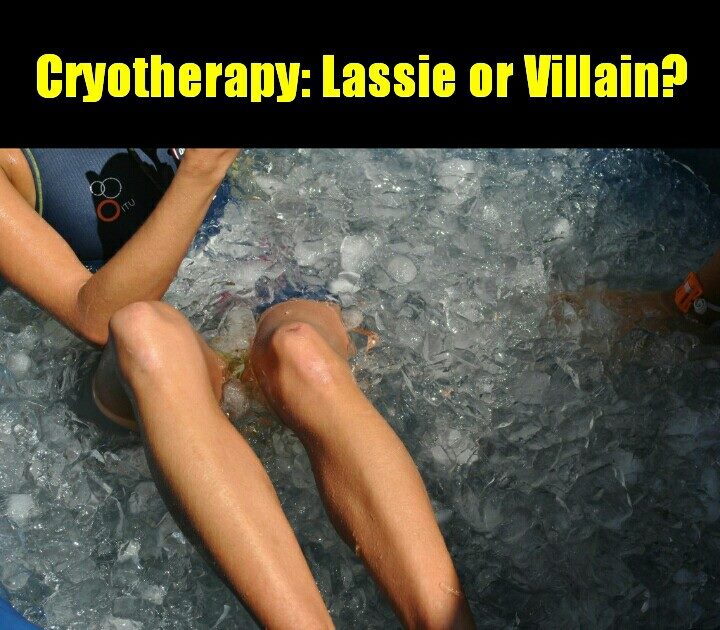
The sports training, especially high yield, requires a lot of physical part of itspractitioners and therefore requires a better recovery and more care. The post exercise cooling (Cryotherapy) has been a method widely used by athletes who seek to accelerated recovery of muscles after games and training. This method has been well established as a treatment of muscle injuries such as bruises, sprains and strains (LYNCH and RENSTRON, 1999). According to authors such treatment attenuates secondary hypoxic injury, muscle spasm, pain and swelling, decreasing tissue temperature, metabolism, blood flow and vascular permeability (Knight, 1976; RIPPE and GREEK, 1978). Another benefit highlighted in the literature is the method efficiency using immersion in cold water in the attenuation of muscle soreness caused by exercise (Bleakley and Davison, 2010; BEAKLEY et al, 2012, Leeder and Gissane, 2012.). Therefore, in addition to use in rehabilitation, Cryotherapy has been used in muscle recovery after strenuous exercise. However, some doubts arise about the mechanism that causes this recovery, therefore, has not yet been elucidated in the literature (Yamane, Ohnishi, MATSUMOTO, 2015). What is mentioned is that the cryotherapy acts differently in fibers with micro injuries and macro injuries. But not only positive comments are found in the literature. Despite the positive effect of thier rehabilitation, there is doubt about the use of this technique in the relaxation routine of athletes without injuries. According to Deal et al. (2002),the regular body exposure to cold causes induced reductions in permeability and could attenuate inflammatory responses reducing leukocyte transmigration. Thus, regular applications of post-exercise cryotherapy can alleviate muscle and vascular adaptations in response to exercise. Already Yamane et al. (2006) reported in their study that the damage occurs only will vascular level and not muscle. Taking into consideration the doubts about the application of the cooling method after training sessions, Yamane, Ohnishi and Matsumoto (2015) have developed research intended to assess the increase in muscle mass, strength, vascularity, circumference and isometric strength. The first comparative highlighted by the authors was on the muscle thickness and circumference, where both groups had significant increase this, however, without cooling group (SR) achieved significantly higher results. Regarding isometric force, only the SR group had increased. The same happened when the results of arterial diameter were compared. On the results over time to exhaustion, both groups had significant increases, and the comparison between them, there were no differences, suggesting that the method does not interfere in that variable. Although not elucidated the mechanisms that can cause this inhibitory effect with the frequent use of cooling after the training sessions, the authors raise the hypothesis of the influence of HSPs, proteins related to muscular stress, considered important in hypertrophy and muscular adaptations process (THOMPSON et al., 2003). Such proteins are produced in the heat, and frequent exposure to cold can inhibit its synthesis. Nemet et al. (2009) reported in their study that in addition to changes in the synthesis of HSPs, there are also changes in the synthesis of anabolic hormones Considerations The use of cryotherapy for rehabilitation purposes is enhanced as an effective method to speed muscle recovery. In regions without injuries, continued use does not seem to be suitable for inhibiting muscle adaptations that occur in training. No clarification of inhibition vascular or not using the cooling raises the possibility that the use of certain parts of the body rather than total immersion.